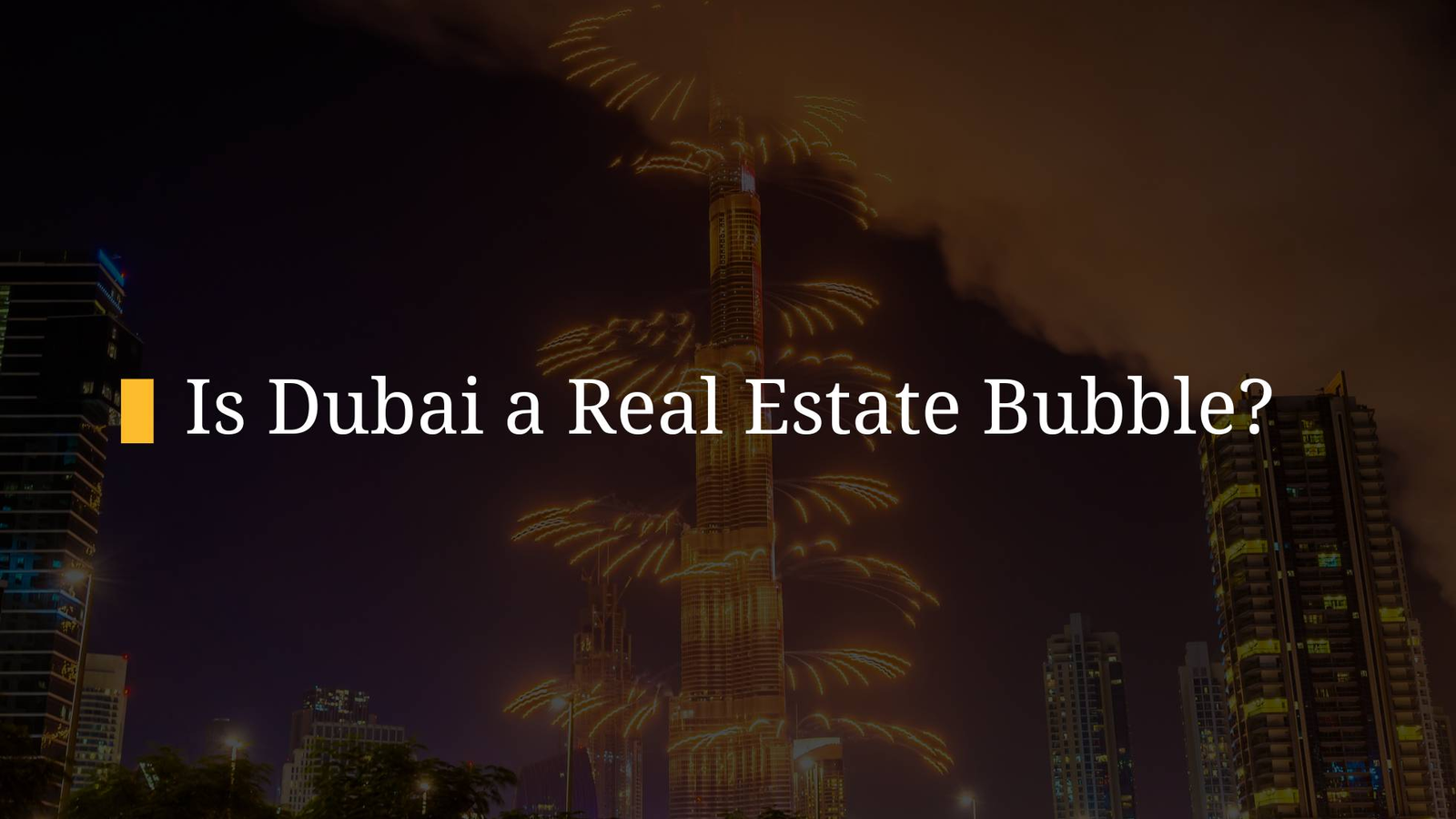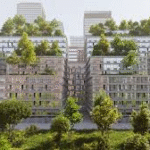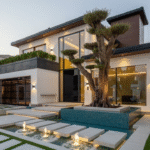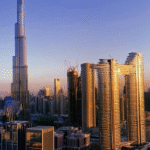Now Reading: Is Dubai entering a real estate bubble? A look at sustainability risks
-
01
Is Dubai entering a real estate bubble? A look at sustainability risks
Is Dubai entering a real estate bubble? A look at sustainability risks

Table of Contents
Dubai’s real estate market in 2025 is experiencing a significant boom, with property prices up 75% since February 2021, transaction volumes reaching 169,000 in 2024 (AED 488B), and a luxury villa surge (9,000 completed in 2024, 19,700 planned for 2025).
This has drawn comparisons to the pre-2008 bubble, raising concerns about whether Dubai is entering another unsustainable cycle. Below is a detailed analysis of whether Dubai’s property market is at risk of a bubble, focusing on sustainability risks and their implications for investors, particularly in prime areas like Dubai Marina and emerging hubs like District 2020.
The analysis also considers the impact of visa reforms (Golden Visa, 100% foreign ownership) and the luxury villa boom, building on prior discussions about Dubai’s market dynamics.
Dubai’s property market in 2025 is approaching pre-2008 records, with average prices at AED 1,750/sqft (up 75% since 2021), 169,000 transactions in 2024 (AED 488B), and a luxury villa boom (9,000 villas completed in 2024, 19,700 planned for 2025).
Fueled by visa reforms (Golden Visa, 100% foreign ownership), population growth (3.92M in 2025), and tourism (19M visitors in 2024), the market’s rapid growth has sparked concerns about a potential real estate bubble, reminiscent of the 2008 crash when prices plummeted 40%–60%. However, regulatory reforms, diversified demand, and controlled supply suggest a more sustainable trajectory.
Below, we assess whether Dubai is entering a bubble, focusing on sustainability risks and their implications for renting versus buying in prime areas like Dubai Marina and emerging hubs like District 2020.
Characteristics of a Real Estate Bubble
A real estate bubble occurs when property prices inflate rapidly due to speculative demand, excessive credit, or oversupply, detached from economic fundamentals, followed by a sharp correction. In 2008, Dubai’s bubble was driven by:
- Speculative Investment: Investors flipped off-plan properties, inflating prices (quadrupled from 2002–2008).
- Oversupply: 52,297 units delivered in 2008–2009 overwhelmed demand, leading to AED 1.1T in stalled projects.
- Easy Credit: High loan-to-value ratios (90%+) fueled debt-driven purchases, resulting in defaults.
- Global Shock: The 2008 financial crisis triggered a 40%–60% price crash.
To evaluate whether Dubai is entering a bubble in 2025, we analyze key indicators and sustainability risks against 2008’s conditions.
Evidence of a Potential Bubble
1. Rapid Price and Transaction Growth
- Price Surge: Average property prices rose 75% since February 2021, reaching AED 1,750/sqft, with villas up 32.4% in 2024 (e.g., Palm Jumeirah villas at AED 25M, 7.7% growth). Luxury properties ($10M+) recorded 1,300+ transactions in Q1 2025, up 31% year-on-year.
- Transaction Volume: 169,000 transactions in 2024 (AED 488B) surpassed pre-2008 peaks (63,000 in 2015), with off-plan sales (25,000 in Q1 2025, AED 53.9B) dominating.
- Comparison to 2008: Pre-2008 prices quadrupled, driven by speculation. Today’s growth, while rapid, is supported by population growth (89,695 new residents in Q1 2025) and HNWI migration (7,200 millionaires in 2024), suggesting demand-driven appreciation rather than pure speculation.
2. Luxury Villa Boom
- Supply Surge: 9,000 villas completed in 2024, with 19,700 planned for 2025 (potentially 14,000 due to delays), contribute to 28,700 new villas. Villa sales surged 65% in Q1 2025 (10,185 transactions, AED 53.4B), with prices up 26%–32%.
- Limited Ultra-Luxury Supply: Only 16 villas in the AED 5,000+/sqft category were delivered in 2024, and $25M+ inventory dropped 85% (583 to 86), fueling bidding wars and price spikes.
- Bubble Risk: The villa boom echoes 2008’s oversupply, but current supply (840,000 total units) lags behind population-driven demand (3.92M residents), reducing crash risks. However, delays in 2025 deliveries could sustain price pressures, inflating perceptions of a bubble.
3. Speculative Off-Plan Activity
- Off-Plan Dominance: Over 60% of 2024 sales were off-plan, with flexible payment plans (10%–20% down) and 15%–20% appreciation before completion attracting investors. Jumeirah Village Circle (JVC) led with 2,200 apartment sales in March 2025.
- Comparison to 2008: Off-plan sales fueled the 2008 bubble, with cancellations when developers defaulted. Today’s escrow accounts and DLD oversight ensure completion, but heavy off-plan reliance raises concerns if demand slows.
4. Fitch Ratings Warning
- Price Correction Risk: Fitch Ratings predicts a potential 15% price drop in H2 2025, citing global economic uncertainties and high prices. This echoes pre-2008 warnings, though analysts like Knight Frank forecast 5%–8% growth, supported by strong fundamentals.
Factors Supporting Market Sustainability
1. Regulatory Reforms
- Post-2008 Measures: Escrow accounts, Real Estate Regulatory Authority (RERA), and stricter loan-to-value ratios (80% for residents, 50% for non-residents) prevent speculative excesses. Unlike 2008’s AED 1.1T in stalled projects, 2025 projects are tightly regulated.
- Cash Transactions: 60% of Q3 2024 transactions (14,977 deals) were cash-based, reducing debt-driven risks compared to 2008’s high-leverage environment.
- Comparison to 2008: Lax regulations and easy credit fueled the 2008 bubble. Today’s safeguards ensure stability, with developers like Emaar and DAMAC maintaining strong financials.
2. Demand-Driven Growth
- Population Influx: Dubai’s population grew to 3.92M in 2025, with 89,695 new residents in Q1 (1,000/day), outpacing supply (61,580 new homes in 2025, 70% apartments). This contrasts with 2008’s oversupply-driven crash.
- HNWI Migration: 7,200 millionaires moved to Dubai in 2024, with 43% of HNWIs targeting properties for Golden Visa eligibility (AED 2M threshold). This sustains demand for luxury villas and apartments in areas like Dubai Marina (7% yields) and District 2020 (5%–7% yields).
- Tourism Boom: 19M visitors in 2024, with a 20M target for 2025, drive short-term rental demand (30% increase, up to 15% ROI), supporting investment in prime and emerging areas.
3. Visa Reforms and Foreign Investment
- Golden Visa: Over 150,000 Golden Visas issued by 2025, with the AED 2M property threshold (e.g., villas in Dubai Hills Estate, apartments in Dubai Marina) attracting HNWIs. Relaxed mortgage rules (no 50% down payment) and family sponsorship enhance appeal.
- 100% Foreign Ownership: Full ownership in freehold zones (e.g., District 2020, Palm Jumeirah) eliminates local sponsor requirements, boosting investor confidence and driving AED 12.8B in FDI in 2023.
- Comparison to 2008: Limited foreign ownership and restrictive visas deterred long-term investment pre-2008. Today’s policies foster sustained demand, reducing speculative flipping.
4. Economic Diversification
- Non-Oil Economy: Non-oil sectors (70% of GDP) like tourism, trade, and tech drive 6% GDP growth in 2025, unlike 2008’s oil-reliant economy. Initiatives like Dubai’s D33 Agenda (doubling the economy by 2033) and District 2020’s innovation hub (85 startups, 30 countries) support long-term stability.
- Comparison to 2008: The 2008 crash was exacerbated by global financial shocks and oil dependency. Dubai’s diversified economy and $1T sovereign wealth fund provide a buffer against external risks.
5. Controlled Supply
- Supply Constraints: Current supply (840,000 units) is insufficient for 3.92M residents, with only 61,580 new homes planned for 2025 (14,000–19,700 villas). This contrasts with 2008’s oversupply, which led to a 40%–60% crash.
- Developer Discipline: Major developers like Emaar and Nakheel prioritize demand-driven projects, with District 2020 repurposing 80% of Expo 2020 infrastructure, avoiding “white elephant” risks.
Sustainability Risks
Despite strong fundamentals, several risks could challenge the market’s sustainability:
- Potential Oversupply: X posts highlight concerns about rapid villa launches (19,700 planned for 2025), though delays (14,000 expected) and demand (3.92M population) mitigate risks. Oversupply in emerging areas like Dubai South could pressure prices if not managed.
- Price Correction: Fitch Ratings’ 15% price drop prediction for H2 2025, driven by global uncertainties (e.g., oil price volatility, geopolitical tensions), could impact ROI, particularly for off-plan investors in District 2020.
- Speculative Behavior: Heavy off-plan activity (60% of 2024 sales) risks speculative flipping, though escrow accounts and cash-heavy deals reduce 2008-style defaults.
- Affordability Concerns: Rising prices (AED 1,750/sqft) and rents (19% increase in Dubai Marina, 10% for villas) strain middle-income buyers and tenants, potentially slowing demand in non-luxury segments.
- Climate Challenges: Dubai’s high temperatures (50°C) may hinder walkable projects like District 2020’s “15-minute city,” though smart infrastructure (e.g., cooling systems) mitigates this.
Renting vs. Buying in the Context of Bubble Risks
Renting
- Advantages:
- Flexibility: Ideal for short-term residents (1–3 years) or those wary of a potential 15% price correction. In Dubai Marina, 1-bedroom rents average AED 98,000/year, with District 2020 at AED 70,000–90,000.
- Low Upfront Costs: Security deposits and agency fees (AED 5,000–10,000) are significantly lower than buying (AED 400,000–600,000 for a AED 2M property).
- Rent Freeze: The three-year rent freeze (effective September 2024) protects tenants from price spikes, enhancing affordability.
- Drawbacks: Renters miss 75% price appreciation (since 2021) and Golden Visa benefits, with no equity building. Rising rents (18% projected for short-term rentals) could strain budgets.
- Bubble Context: Renting avoids exposure to correction risks, making it safer if oversupply or global shocks materialize.
Buying
- Advantages:
- High Yields: Dubai Marina offers 6.4%–7% yields, District 2020 5%–7%, and villas 6%–9%, with short-term rentals up to 15%. A AED 2M apartment in Dubai Marina could yield AED 130,000/year, offsetting mortgage costs.
- Capital Appreciation: Villas (26%–32% growth in 2024) and apartments (10%–15% in District 2020) offer strong gains, supported by Golden Visa demand.
- Golden Visa: Properties above AED 2M (e.g., Dubai Marina apartments, District 2020 villas) qualify for 10-year residency, attracting HNWIs.
- Risks: A 15% price correction could reduce ROI, and villa supply delays (14,000 vs. 19,700) may delay returns. Off-plan purchases carry completion risks, though mitigated by regulations.
- Bubble Context: Buying suits long-term investors (5+ years) willing to weather potential corrections, leveraging visa reforms and tax-free gains.
Strategic Considerations
- Dubai Marina: Established with 7% yields and 19% rent growth, it’s a safer bet for buying if prioritizing immediate returns. Renting suits short-term residents avoiding correction risks.
- District 2020: Emerging as “the next Marina,” it offers lower entry prices (AED 1.5M–3M) and 10%–15% growth, ideal for off-plan buyers seeking Golden Visa benefits. Renting is viable for testing the area’s maturing infrastructure.
- Short-Term (1–3 Years): Renting mitigates bubble risks, especially with the nomination-based Golden Visa (AED 100,000) increasing rental demand.
- Long-Term (5+ Years): Buying in prime (Dubai Marina) or emerging (District 2020) areas maximizes yields, appreciation, and residency benefits, assuming no major correction.
Conclusion: Bubble or Sustainable Boom?
Dubai’s real estate market in 2025 is not a classic bubble like 2008, due to:
- Demand-Driven Growth: Population (3.92M), HNWI migration (7,200 in 2024), and tourism (19M visitors) sustain demand, unlike 2008’s speculative frenzy.
- Regulatory Safeguards: Escrow accounts, RERA, and cash-heavy transactions (60% in Q3 2024) reduce risks compared to 2008’s easy credit and defaults.
- Visa Reforms: Golden Visas and 100% ownership drive FDI ($12.8B in 2023), supporting villas and apartments in freehold zones.
- Controlled Supply: Supply (61,580 homes in 2025) lags demand, unlike 2008’s oversupply (52,297 units).
However, sustainability risks—potential oversupply, 15% price correction, speculative off-plan activity, and affordability pressures—require caution. Renting is safer for short-term residents or those wary of corrections, offering flexibility in areas like Dubai Marina and District 2020.
Buying suits long-term investors leveraging high yields (6%–9%), appreciation (75% since 2021), and Golden Visa benefits, particularly in villas or off-plan properties. real estate bubble
read more: Effect of visa reforms on foreign investment – Golden Visas + 100% ownership





















